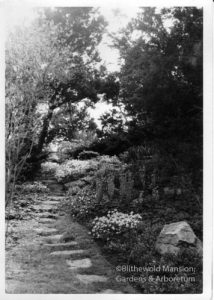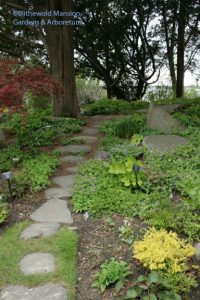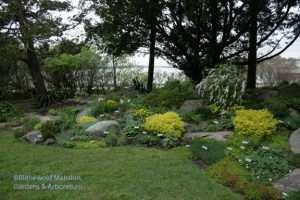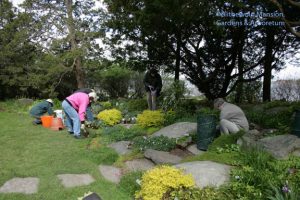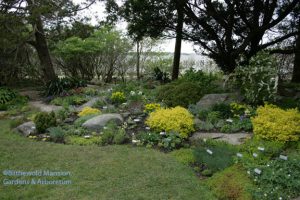Sweet and low
 According to legend, the Rock Garden was Bessie Van Wickle McKee’s favorite place on the property and it’s easy to see why, especially this time of year. But it is a very different garden than when she was alive. Like any garden will, it has changed over the years.
According to legend, the Rock Garden was Bessie Van Wickle McKee’s favorite place on the property and it’s easy to see why, especially this time of year. But it is a very different garden than when she was alive. Like any garden will, it has changed over the years. 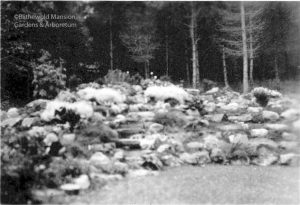 By the looks of some of the earliest pictures of it in the archives, she planted a rock garden – emphasis on the rocks – and it looks like it was out in the open, in full-full sun. But Bessie was an enthusiastic plantswoman. Using Louise Beebe Wilder’s Adventures in My Garden and Rock Garden as a reference, Bessie planted a lot more than rocks as time went on. Later pictures show a growing garden with a woodland wildflower feel – with rock paths around good-sized shrubs and under shady trees.
By the looks of some of the earliest pictures of it in the archives, she planted a rock garden – emphasis on the rocks – and it looks like it was out in the open, in full-full sun. But Bessie was an enthusiastic plantswoman. Using Louise Beebe Wilder’s Adventures in My Garden and Rock Garden as a reference, Bessie planted a lot more than rocks as time went on. Later pictures show a growing garden with a woodland wildflower feel – with rock paths around good-sized shrubs and under shady trees.
Today’s Rock Garden is one of our best challenges. The amount of sun that reaches it is one part of the puzzle. At least 75% of the garden is shaded at least partially – although since a large English oak was removed recently, some of the shadiest bits are suddenly seeing the sun. And we worry over drainage issues. The whole garden becomes an island in a flood tide – it is located in one of the lowest portions of the property, a stone’s throw from the bay. Most of the garden is wet through the winter and spring but even the soggiest parts of it can bake dry in the summer. It has the potential to be not just one kind of rock garden, but every kind – from mountaintop skree to woodland wildflower showcase to watery bog.
But whatever kind(s) of rock garden it is, scale of it is one of its most important aesthetic considerations – not only because rock gardens typically hold diminutive specimen but also because of the view through the garden’s keyholes. From here Bristol harbor looks like a miniature diorama inside a Fabergé egg. So we’re focusing on making changes that will keep the garden in scale, sweet and low and delicately ornate. This week, with the Rockettes’ help, Gail and I moved some larger scale plants like geranium and heuchera from front-and-center spots to make way for tiny lovelies such as Saxifraga dactiloides and alpine poppies and more campanulas. We’ve added sand to some of the planting pockets to sharpen drainage and a little lime for the saxifrages in hopes of tricking them into thinking they’re at home among the rocks.
As we stand back and look at our work we can tell that we’re not finished adding and editing – for this year, or maybe ever. But we can hope that Bessie and our visitors might approve of the recent changes. I wonder what Bessie’s opinion on metal labels and plants with yellow foliage might have been… (Most of that is Spirea japonica ‘Golden Elf’.) What’s your opinion?

